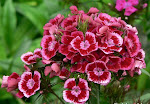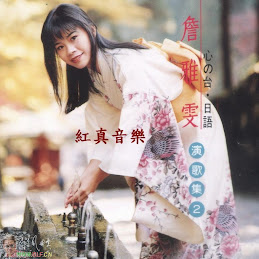Acute care is a branch of secondary health care where a patient receives active but short-term treatment for a severe injury or episode of illness, an urgent medical condition, or during recovery from surgery. In medical terms, care for acute health conditions is the opposite from chronic care, or longer term care. [1]
My course-mates and I are assigned to Singapore General Hospital for our 6 weeks attachment after the second semester in Nursing Studies. As with the first attachment at Ang Mo Kio - Thye Hwa Kwang Hospital, we are expected to adapt to our new working environment and quickly build rapport with the staffs.
Picture posted by The Straits Times, SPH Digital News on 16 October 2015 at 8:13 pm SGT
https://blogger.googleusercontent.com/img/b/R29vZ2xl/AVvXsEhHo6B0nira0HphBVGk2TypPAT2Ui85VwDDEqBbRimw5sxc-vpMkQf1h9iahfKfCoLiG_YYCAIljSMGKd4M7odY-Cl965YvlnIwhEyko8vquw6iDLLDbZotDe-Rqst30TIWBonM1-u_zw_g/s1600/mhpixsgh161015.jpg
http://www.straitstimes.com/sites/default/files/styles/x_large/public/articles/2015/10/16/mhpixsgh161015.jpg?itok=MH6uWkF4
http://www.straitstimes.com/singapore/health/441-sgh-patients-tested-negative-for-hepatitis-c
The first thought of being posted to an acute hospital is that everything is going to faster pace as compared to community hospitals. As expected, it really is. The expectations of us despite being a year 1 student was to pick up information quickly, learn to adapt to our new working environment and quickly build rapport with the staffs. Personally, I felt that building rapport was my top priority at the start as it determines whether or not we would be able to proceed smoothly for the first 2 weeks. And I’m glad things turned out well.
Picture posted by The Business Times, SPH Digital News on Tuesday, 08 December 2015 at 15:35
https://blogger.googleusercontent.com/img/b/R29vZ2xl/AVvXsEg4Mlph3COGnZnD_Ziic-Zt9TziqSqEDSYzU79PB2yyavKyT7mbKalf_Ka4nUgkiAHEE5eN4bqgI0KvUioDQsYloaRLw1mdROtt38v5uNO9lAw4auJiBbBGXxVAqC06DOeG0mPb1yjHMUm6/s1600/SGHWard081215_0.jpg
http://www.businesstimes.com.sg/sites/default/files/styles/lifestyle_cover/public/image/2015/12/08/SGHWard081215_0.jpg?itok=bEN8ZxyV
http://www.businesstimes.com.sg/government-economy/sgh-hep-c-outbreak-due-to-multiple-factors-panel
Jumping into the ward after 1 day of orientation definitely wasn’t enough for me to familiarize. It took me approximately till the end of week 1 for me to get the hang of what I was doing. On a positive note, I didn’t have much problem opening up to my patients and they were very understanding of my situation as student. It wasn’t long before I gained their trust to let me attend to them.
Photo by Tukiman Warji
Picture posted by The Straits Times on 21 July 2015 at 5:10 am SGT - Ms Nur Faridah Mohd Mokhtar, senior staff nurse at Singapore General Hospital (SGH) attending to the needs of a patient.
https://blogger.googleusercontent.com/img/b/R29vZ2xl/AVvXsEj9ur5vVsBERO-EKHGRcd6bcsIc-RzbCCsBrtc_f1I4d4nsisc78SXpp8-xtvn0ItIUvrsI0Yx4WR1G_iexCf-uziDJrsJLfBRTXZwFlsNDI4JRhAW-7m2V5lx2m1153sziVtbSqIs77ek3/s1600/nur2107153-1.jpg
http://www.straitstimes.com/sites/default/files/styles/article_pictrure_780x520_/public/articles/2015/07/21/nur2107153.jpg?itok=j5-zLF6g
http://www.straitstimes.com/forum/letters-in-print/retaining-talent-takes-confidence
Initially, anything that we do had to be supervised by the SN/EN (Staff Nurse/Enrol Nurse) in the ward. I see it as a trust building phase where they roughly get a gauge of how capable are we at handling situations and to what extent. Slowly but surely, we begin to build rapport with our fellow colleagues in the ward. Soon they too started trusting us. I felt that this milestone was very important in reassuring us whether or not we are going the right track. Of course, not everything was allowed to be done without their supervision, but for routines like vital signs or oral feeding, it is possible.
Nurse Educators, mentor and coach students attached to SGH and also serve as an educational resource for nurses.
Picture posted by Singapore General Hospital
https://blogger.googleusercontent.com/img/b/R29vZ2xl/AVvXsEjRZ18jDj73TC03sGucHrkwEZawsm_-sWzY3TXZi09DdcgYLB7t7wGVefdfIJxvBdrgIv4_O6E-eBepALUDq82o0gGmPtPyOPy030-Nfv6o7Aq5Wvj79McNNcnRRblgWJZQUsSCmTNR6IIX/s1600/nurseEdu-1.jpg
https://www.sgh.com.sg/Clinical-Departments-Centers/Nursing/nursingprofession/PublishingImages/nurseEdu.jpg
https://www.sgh.com.sg/clinical-departments-centers/nursing/nursingprofession/pages/nurse-educator.aspx
Through this 2 weeks I get to experience a variety of different interactions not with the patients but their family members. I’ll just list 1 or 2 examples. There was a family member that was extremely concerned as to why the patient has to be on NGT (Nasogastric Tube). To me, I saw it as a privilege for me to be able to explain to them the need and also educate them slightly on what to look out for NGT. In response, they were very appreciative and it has definitely raised the mood for my day. Following, there are also family members that are extremely concerned with the condition of the patient such that they question the nurses frequently. As this is our profession, we are not supposed to reject or turn down no matter how busy we are and to patiently handle the situation and hopefully minimize their anxiety.
Ø Gavage (feeding) / Lavage (suctioning)
Ø Select the nostril that has greater airflow.
Ø Assist the client to a high fowler’s position
Ø NEX technique (nose-ear-xiphoid)
Ø Checking the patency:
ü Aspirate stomach contents and check the pH, which should be acidic
ü Introduce 10-30 ml of air into the NGT and auscultate at the epigastric area, gurgling sound is heard
ü The most accurate method of assessing the placement of NGT is X-ray study
Ø Before feeding assess residual feeding contents. To assess absorption of the last feeding, if 50 ml or more, verify if the feeding will be given.
Ø Height of feeding is 12 inches above the point of insertion.
Ø Ask the client to remain in position for at least 30 min
Ø Common Problems of Tube Feedings
Vomiting
Aspiration
Diarrhea
Hyperglycemia
Picture posted by Mister Blogger, All For Nursing at 9:55 AM - Fundamentals of Nursing
https://blogger.googleusercontent.com/img/b/R29vZ2xl/AVvXsEgEOxxxTVanLBhQW6ZjfAeOAGzGCjnlLdOdLDH5ra8kKR9tSnJD3s9EcNkQxOzM5nQ98qYrzpA2ZAkqZQUtcilnYqMwTOY5ha_q0c_jF2D5zhidSDyS44L1XZr1l0hdMvVGjvoVl-uPPz9_/s1600/NGT.jpg
https://blogger.googleusercontent.com/img/b/R29vZ2xl/AVvXsEgFXINelPIM5WfrmhUhuT2B2KCGg619_zOcz0qIMZ-IBXvHIkeYt00RRjXMWK744jpooOo0fQ7-KszLQzwt0_RDe1rDMALQY8qkXkNfBhgvLjQ4rtEh16heQGmWUTlDz_yHlv4_YxkqnG88/s1600/NGT.jpg
http://allfornursing.blogspot.sg/2013/06/nursing-review-nasogastric-tube-ngt.html
Moving on to the skills segment, which was the more challenging task as well. Once again not forgetting that this is the place where we integrate knowledge into real life application. Over the course of 2 weeks, the most challenging task for me was wound dressing. With the strict supervision of our CI (Clinical Instructor), we had to carry out the skill well despite nervousness setting in. I was definitely not confident and lacking in many areas but it is a phase that I have to overcome. There were many learning points and tips/tricks to procedures like this that will never be taught in textbooks or lectures. And this, is where we start building our experience.

We start building our experience in wound dressing under the strict supervision of our CI (Clinical Instructor).
There are many skills, tips/tricks to procedures like this that can only be acquired in reality and a best place is at SGH's surgical ward. This is the place where we integrate knowledge into real life application.
Clean wounds with sterile water or isotonic saline. and not Antiseptic solutions, Alcohol or acetone. Alcohol or acetone should be avoided completely as they can burn the newly healing wound tissues, making full healing hard to achieve. [2]
Picture posted by Ms Karen Lim Yu Shi, Pharmacist (SGH Pharmacy Department)
https://blogger.googleusercontent.com/img/b/R29vZ2xl/AVvXsEgIUsNOWYFRiEAO7GVcGh9p958I5SjSEDLmphAXisc6qknAzsmPV5gFIjemTxGi32XrzxfGVjmpF2V9b-8nsdgQGs5DnElR1SP3_jpf-dZsn2307v1tTxr7A8cj_KgbmVgMez8PzW9qJDTU/s1600/how-to-clean-and-treat-a-skin-wound.jpg
https://www.healthxchange.sg/sites/hexassets/Assets/medicine-first-aid/how-to-clean-and-treat-a-skin-wound.jpg
https://www.healthxchange.sg/medicine-first-aid/first-aid/how-clean-treat-skin-wound
Throughout this entire 2 weeks, our CI made us felt very comfortable and welcomed. I liked how she sets a clear line between being like a friend to us and also a strict and demanding instructor. Occasionally testing us on our knowledge has definitely triggered me to keep thinking of the how’s and why’s as well. That is something that I’ll continuously keep telling myself to become a better nurse.

Our CI made us felt very comfortable and welcomed although she occasionally tests us on our knowledge and triggers us to keep thinking of the how’s and why’s. That is something that I’ll continuously keep telling myself in order to become a better nurse in the healthcare industry.
Picture saved by Contyra Carter to Just because (Pinterest)
https://blogger.googleusercontent.com/img/b/R29vZ2xl/AVvXsEje2d6V7RDzEdseIfrBFgJNhYD-2QXKLYpZHZist7Pgu9IitagcgDZTfftCzpgQFNA9PZDCGkS-5urs6kUO8_7h-cDvnPIAxkUHXMEWgz5ISNj35szdC6l-aUCegVRS1LgqjfMM2peV18Jo/s1600/f33149db2457c49547ae96aa8810fba4-1.jpg
https://s-media-cache-ak0.pinimg.com/564x/f3/31/49/f33149db2457c49547ae96aa8810fba4.jpg
https://www.pinterest.com/pin/AfU2OB9e2_pnDK8QcUb7LbXbOWl4rp6QhOePVCeQU2mpSBWyHIj-RmM/
- https://blogger.googleusercontent.com/img/b/R29vZ2xl/AVvXsEhHo6B0nira0HphBVGk2TypPAT2Ui85VwDDEqBbRimw5sxc-vpMkQf1h9iahfKfCoLiG_YYCAIljSMGKd4M7odY-Cl965YvlnIwhEyko8vquw6iDLLDbZotDe-Rqst30TIWBonM1-u_zw_g/s1600/mhpixsgh161015.jpg
- http://www.straitstimes.com/sites/default/files/styles/x_large/public/articles/2015/10/16/mhpixsgh161015.jpg?itok=MH6uWkF4
- http://www.straitstimes.com/singapore/health/441-sgh-patients-tested-negative-for-hepatitis-c
- https://blogger.googleusercontent.com/img/b/R29vZ2xl/AVvXsEg4Mlph3COGnZnD_Ziic-Zt9TziqSqEDSYzU79PB2yyavKyT7mbKalf_Ka4nUgkiAHEE5eN4bqgI0KvUioDQsYloaRLw1mdROtt38v5uNO9lAw4auJiBbBGXxVAqC06DOeG0mPb1yjHMUm6/s1600/SGHWard081215_0.jpg
- http://www.businesstimes.com.sg/sites/default/files/styles/lifestyle_cover/public/image/2015/12/08/SGHWard081215_0.jpg?itok=bEN8ZxyV
- http://www.businesstimes.com.sg/government-economy/sgh-hep-c-outbreak-due-to-multiple-factors-panel
- https://blogger.googleusercontent.com/img/b/R29vZ2xl/AVvXsEj9ur5vVsBERO-EKHGRcd6bcsIc-RzbCCsBrtc_f1I4d4nsisc78SXpp8-xtvn0ItIUvrsI0Yx4WR1G_iexCf-uziDJrsJLfBRTXZwFlsNDI4JRhAW-7m2V5lx2m1153sziVtbSqIs77ek3/s1600/nur2107153-1.jpg
- http://www.straitstimes.com/sites/default/files/styles/article_pictrure_780x520_/public/articles/2015/07/21/nur2107153.jpg?itok=j5-zLF6g
- http://www.straitstimes.com/forum/letters-in-print/retaining-talent-takes-confidence
- https://blogger.googleusercontent.com/img/b/R29vZ2xl/AVvXsEjRZ18jDj73TC03sGucHrkwEZawsm_-sWzY3TXZi09DdcgYLB7t7wGVefdfIJxvBdrgIv4_O6E-eBepALUDq82o0gGmPtPyOPy030-Nfv6o7Aq5Wvj79McNNcnRRblgWJZQUsSCmTNR6IIX/s1600/nurseEdu-1.jpg
- https://www.sgh.com.sg/Clinical-Departments-Centers/Nursing/nursingprofession/PublishingImages/nurseEdu.jpg
- https://www.sgh.com.sg/clinical-departments-centers/nursing/nursingprofession/pages/nurse-educator.aspx
- https://blogger.googleusercontent.com/img/b/R29vZ2xl/AVvXsEgEOxxxTVanLBhQW6ZjfAeOAGzGCjnlLdOdLDH5ra8kKR9tSnJD3s9EcNkQxOzM5nQ98qYrzpA2ZAkqZQUtcilnYqMwTOY5ha_q0c_jF2D5zhidSDyS44L1XZr1l0hdMvVGjvoVl-uPPz9_/s1600/NGT.jpg
- https://blogger.googleusercontent.com/img/b/R29vZ2xl/AVvXsEgFXINelPIM5WfrmhUhuT2B2KCGg619_zOcz0qIMZ-IBXvHIkeYt00RRjXMWK744jpooOo0fQ7-KszLQzwt0_RDe1rDMALQY8qkXkNfBhgvLjQ4rtEh16heQGmWUTlDz_yHlv4_YxkqnG88/s1600/NGT.jpg
- http://allfornursing.blogspot.sg/2013/06/nursing-review-nasogastric-tube-ngt.html
- https://blogger.googleusercontent.com/img/b/R29vZ2xl/AVvXsEgIUsNOWYFRiEAO7GVcGh9p958I5SjSEDLmphAXisc6qknAzsmPV5gFIjemTxGi32XrzxfGVjmpF2V9b-8nsdgQGs5DnElR1SP3_jpf-dZsn2307v1tTxr7A8cj_KgbmVgMez8PzW9qJDTU/s1600/how-to-clean-and-treat-a-skin-wound.jpg
- https://www.healthxchange.sg/sites/hexassets/Assets/medicine-first-aid/how-to-clean-and-treat-a-skin-wound.jpg
- https://www.healthxchange.sg/medicine-first-aid/first-aid/how-clean-treat-skin-wound
- https://blogger.googleusercontent.com/img/b/R29vZ2xl/AVvXsEje2d6V7RDzEdseIfrBFgJNhYD-2QXKLYpZHZist7Pgu9IitagcgDZTfftCzpgQFNA9PZDCGkS-5urs6kUO8_7h-cDvnPIAxkUHXMEWgz5ISNj35szdC6l-aUCegVRS1LgqjfMM2peV18Jo/s1600/f33149db2457c49547ae96aa8810fba4-1.jpg
- https://s-media-cache-ak0.pinimg.com/564x/f3/31/49/f33149db2457c49547ae96aa8810fba4.jpg
- https://www.pinterest.com/pin/AfU2OB9e2_pnDK8QcUb7LbXbOWl4rp6QhOePVCeQU2mpSBWyHIj-RmM/








































.jpg)
.gif)
.jpg)
























































